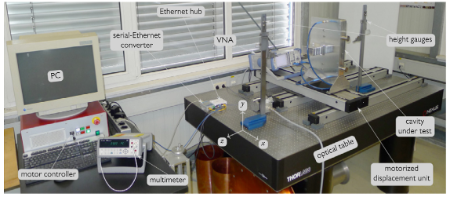Intensity-sensitive and position-resolving cavity for heavy-ion storage rings
A heavy-ion storage ring can be adapted for use as an isochronous mass spectrometer if the ion velocity matches the transition energy of the ring. Due to the variety of stored ion species, the isochronous condition cannot be fulfilled for all the ions. oPAC fellow Xiangcheng Chen and co-workers from GSI (Germany), AGH University of Science and Technology (Poland), and the University of Surrey (England) have proposed an intensity-sensitive and position-resolving cavity to eliminate the measurement uncertainty stemming from the velocity spread.
In a paper recently published in Nuclear Instruments and Methods in Physics Research A, the authors discuss the correction method for the anisochronism effect in the measurement with the cavity. Then they introduce a novel design, which is operated in the monopole mode and offset from the central beam orbit to one side. The geometrical parameters were optimized by analytic and numerical means in accordance with the beam dynamics of the future collector ring at FAIR. Afterwards, the electromagnetic properties of scaled prototypes were measured on a test bench. The results were in good agreement with the predictions.
The design process presented in the paper is intended for, but not limited to, the collector ring. It can easily be adapted to another cavity in a different ring. Apart from the collector ring, there are a few other heavy-ion storage rings that will be operational in the near future, such as the TSR at ISOLDE, the R3 at RIKEN, and the SRing at HIAF, which will offer more opportunities to test the position cavity and correction algorithm with radioactive ion beams.

Setup of the test bench for the prototypes. The origin of the Cartesian coordinates is supposed to be in the center of the beam pipe, but intentionally shifted to outside for better visibility.
This work has been published in Nuclear Instruments and Methods in Physics Research A 826 (2016) 39–47. http://www.sciencedirect.com/science/article/pii/S0168900216302649